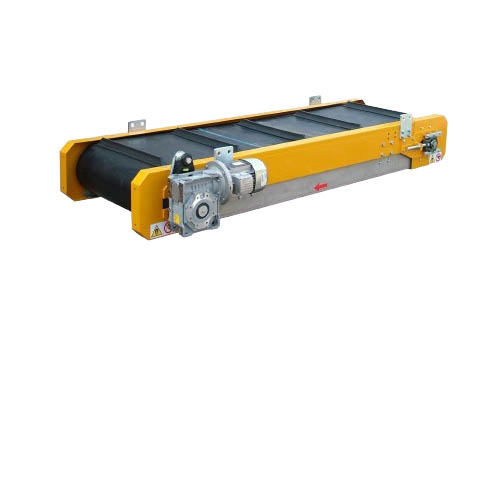High-End Wind Shifter
In waste management, a high-end wind shifter is crucial for efficiently separating various types of materials based on their density and aerodynamic properties. These advanced systems are designed to handle the complexities of waste streams, improving sorting accuracy and overall process efficiency.
Features and Components
- Advanced Airflow System
- High-Performance Fan or Blower: Capable of generating strong and consistent airflows to effectively separate lightweight and heavy materials.
- Optimized Air Ducts and Channels: Designed for uniform airflow distribution, ensuring consistent separation performance across the entire chamber.
- Precision Separation Chamber
- Design: Includes adjustable baffles and airflow guides to control the air velocity and direction, allowing for fine-tuned separation of materials.
- Material: Constructed from durable, high-strength materials to withstand harsh operating conditions and maintain long-term performance.
- Material Feed System
- Hopper or Vibratory Feeder: Provides controlled feeding of mixed waste materials into the separation chamber.
- Distribution Mechanism: Ensures even distribution to prevent material clumping and optimize separation efficiency.
- Discharge Mechanisms
- High-Quality Chutes and Collection Bins: Designed to handle various types of separated materials, including lightweight fractions like plastics and heavier materials like metals or glass.
- Adjustable Gates: Allow for precise control over the flow of separated materials to different collection points.
- Advanced Control and Monitoring Systems
- Control Panel: Features a touchscreen interface and programmable settings for easy operation and adjustment of separation parameters.
- Sensors and Monitoring: High-precision sensors monitor air velocity, material flow rates, and separation performance, providing real-time data for process optimization.
- Cleaning and Maintenance Features
- Automated Cleaning Systems: Includes brushes, air jets, or other mechanisms to minimize downtime and maintain optimal performance.
- Access Panels: Designed for easy access to key components for routine maintenance and cleaning.
Working Principle
- Material Feeding: Mixed waste materials are fed into the separation chamber via the hopper or feeder.
- Controlled Airflow: The fan or blower creates a consistent and controlled air stream that moves through the separation chamber.
- Density-Based Separation: Lightweight materials are carried away by the airflow, while heavier materials fall through to the lower part of the chamber.
- Precise Discharge: Separated materials are collected through adjustable chutes or bins, allowing for accurate sorting based on density.
Applications in Waste Management
- Recycling Facilities: Separating different types of recyclables such as plastics, metals, paper, and glass from mixed waste streams.
- Municipal Solid Waste (MSW): Sorting and processing municipal waste to recover valuable materials and reduce landfill use.
- Construction and Demolition Debris: Separating materials like wood, metal, and concrete from construction and demolition waste.
- Organic Waste: Removing lightweight contaminants from organic waste streams to enhance composting or anaerobic digestion processes.
Benefits
- Enhanced Sorting Accuracy: Provides high-precision separation of materials, improving the quality and purity of recycled materials.
- High Capacity: Capable of handling large volumes of waste efficiently, making it suitable for high-throughput applications.
- Versatility: Adaptable to various waste streams and materials, offering flexibility in waste management operations.
- Improved Process Efficiency: Optimizes sorting and separation processes, leading to reduced operational costs and increased recovery rates.
- Advanced Control: Offers detailed control and monitoring of the separation process, allowing for continuous optimization.
Maintenance Tips
- Regular Inspections: Check the airflow system, separation chamber, and discharge mechanisms for wear and damage.
- Cleaning: Utilize automated cleaning systems and perform manual cleaning as needed to prevent material buildup.
- Airflow Calibration: Regularly calibrate and maintain airflow settings to ensure consistent separation performance.
- Component Monitoring: Monitor wear and tear on key components and replace parts as necessary to maintain optimal performance.
- System Calibration: Periodically calibrate sensors and control systems to ensure accuracy and efficiency.
Typical Layouts
- Horizontal Airflow: Airflow is directed horizontally through the separation chamber, which is effective for many standard waste sorting applications.
- Vertical Airflow: Airflow moves vertically, often used in compact designs or specialized applications where space is limited.
- Multi-Stage Systems: Multiple wind shifters arranged in series or parallel to achieve more refined separation and higher efficiency in complex waste streams.
High-end wind shifters for waste management are designed to meet the demanding needs of modern recycling and waste processing facilities. They offer enhanced performance, flexibility, and efficiency, making them an essential tool for optimizing waste separation and recovery. If you need more specific details or have questions about a particular model or application, feel free to ask!


